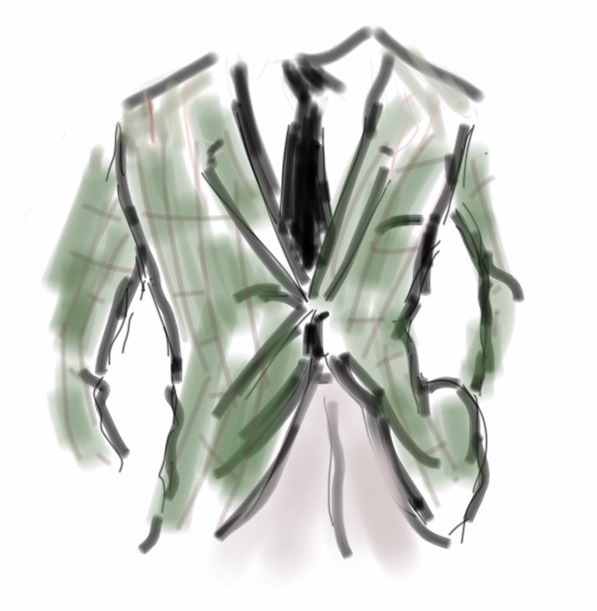 Do you remember the 1990s? It was a decade of serious social and sartorial change; paradigm shifting, to use a very ‘90s term. Back then, the rules which governed the very concept of business attire and professional decorum were being tossed out the window wholesale. Funny thing is that our rush to free the imposed necktie of formality fastened about our collective necks would eventually lead to the current demand for bespoke, dead-stock cloth, small batch, hand-crafted bow ties and MTO suits with hacking pockets.
Do you remember the 1990s? It was a decade of serious social and sartorial change; paradigm shifting, to use a very ‘90s term. Back then, the rules which governed the very concept of business attire and professional decorum were being tossed out the window wholesale. Funny thing is that our rush to free the imposed necktie of formality fastened about our collective necks would eventually lead to the current demand for bespoke, dead-stock cloth, small batch, hand-crafted bow ties and MTO suits with hacking pockets.
So, how did we get here?
Prior to the dot-com revolution, which was then just gearing up, suits were de rigueur in most offices. The concept of “corporate casual” had not yet been birthed; at least not in the mainstream workplace. For most men, work wear was without exception off-the-rack, generally generic, boxy, boring , and uninspired.
You can surmise that part of the massive cultural shift in the works was due in some part to men desperately seeking to stamp some individuality and value on their working lives, roles in the world, and indeed their basic self expression. It was a personal style champagne cork ready to pop. As the Internet revolution gained steam – the tool itself, not the social influencer into which it grew – and started to impact how we did business and even thought about business, our work wardrobes too began to change.
Shuffling to the closet each morning, men started to pine for the glories of casual comfort. Just like those Silicon Valley guys who seemed to be living the real American Dream, lawyers and accountants, statisticians, and bureaucrats all started to ask for workwear flexibility. This was the beginning of a sartorial revolution that would, ironically, lead full-circle to the present resurgence of dressing up and dressing well.
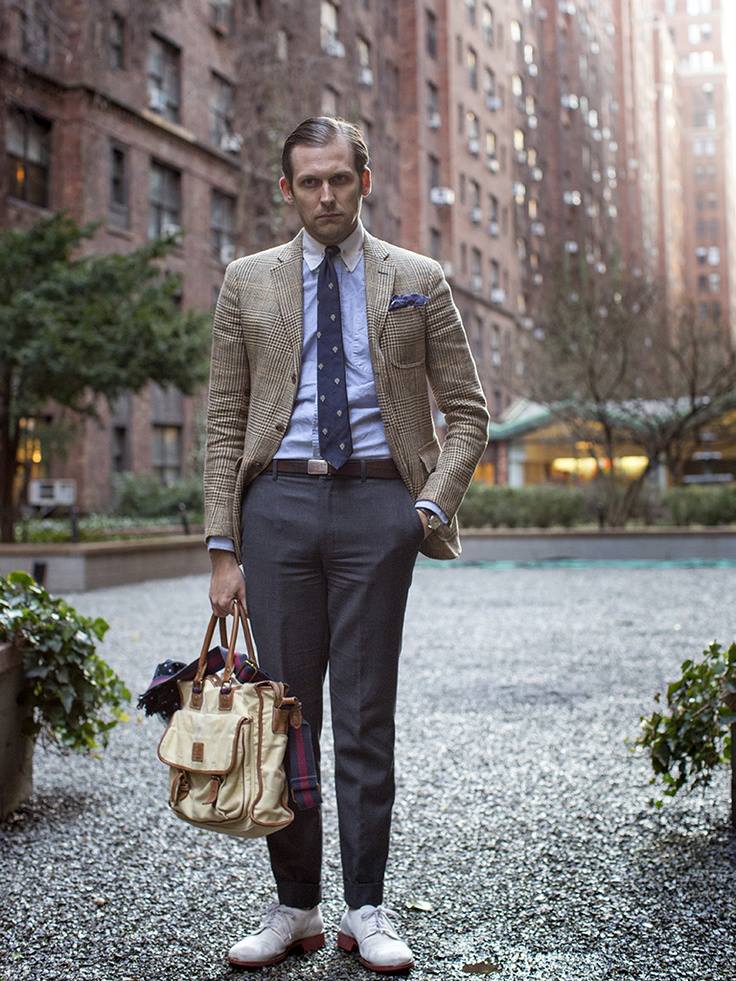 For the elders out there, remember the young hotshot exec in those 1998 Westin Hotel TV spots? He was the guy who was so successful that he got away with – can you imagine – wearing jeans to the office? Scandalous! That was big stuff back then. He was a rock star.
For the elders out there, remember the young hotshot exec in those 1998 Westin Hotel TV spots? He was the guy who was so successful that he got away with – can you imagine – wearing jeans to the office? Scandalous! That was big stuff back then. He was a rock star.
But that was the goal; to unshackle yourself from the grey suit of the drone class. To be free and cool; to dress as you like and and not follow a fashion dictate. In the end of course, many of us got some variation of that sartorial office freedom, and the result was pretty predictable.
When given the option, it seems that many men out there are sort of slobs – or at least don’t have a lot of taste and respect for the larger community. Certainly not a penchant for elegance. The resurgent interest in men’s fashion, personal style, and for some, a near-obsession with quality and heritage, is due in large part to the current generation looking to their parents for guidance and instead seeing 50 year-old college wanabes.
Today’s 20 and 30 year-olds are rebelling against their parent’s generation, and with good reason. Not only do many current dads have little personal style, they also deign to find value in things that even sniff of vanity or taste.
Indeed, the generation that matured under the influence of grunge music, Old Navy as office wear, and a cultural rejection of “corporate influence” was groomed to view an interest in style as effeminate and undesirable. At the same time, they saw the coat and tie as a yoke of bland depersonalization. It was the embodiment of the “uniform” in all its negative context.
And on that last point, your dad is right.
By the late 1980s and throughout the 1990s, office wear was, for the most part, boxy and bland, uninspired and uninspiring. Off-the-rack menswear was at its nadir and the very idea of something like Suit Supply was inconceivable. The cool kids didn’t wear suits, they wore jeans and Chuck Taylor’s to the office. They had messenger bags and messy hair. They worked in California. They were smart, ironic, and edgy. And, most importantly, they were individuals and they knew it.
 Those guys expressed individualism through nonconformity and discarding the sartorial symbols of traditional work. To these rebels, what they did mattered; not what they wore. Sartorial rebellion was their visible call to arms. Of course, such things are never so simple: by dressing in a deliberately rebellious and nonconformist fashion, they were themselves creating a new standard of conformity. Dressing outside the cultural boundaries of this new wardrobe code (the omnipresent hoodie, for example) risked exclusion and social derision.
Those guys expressed individualism through nonconformity and discarding the sartorial symbols of traditional work. To these rebels, what they did mattered; not what they wore. Sartorial rebellion was their visible call to arms. Of course, such things are never so simple: by dressing in a deliberately rebellious and nonconformist fashion, they were themselves creating a new standard of conformity. Dressing outside the cultural boundaries of this new wardrobe code (the omnipresent hoodie, for example) risked exclusion and social derision.
Fast forward to today and we have a near opposite situation. What had then been new and fresh, innovative and freeing, basically turned into an excuse to wear sweatpants to the office. All those amazing perks that went along with the relaxed dress code – game rooms, personal concierge service, a loaner Maserati, company-provided grocery shopping and dog walking – all went away with the collapse of the dot.com bubble.
That pesky “profitability” thing just ruined it all.
However, in Silicon Valley and throughout the rest of the country, the casual wardrobe stuck in there. It was seen as anachronistic and unnecessary to once again don a tie or suit if you did not absolutely have to do so. “Why does it matter” was the thought. Work and results were the point, not how you dressed. To be sure, there was some retrenching on dress codes, but it was largely confined to traditionally formal environments like law and corporate offices.
While the dot.com implosion dented casual office wardrobes, it had not totally invalidated the concept. Khakis and polo shirts persisted. In the eyes of some though, lack of “appropriate” office dress belied a deeper cultural issue: a lack of respect and accountability for one’s self and work. This viewpoint is often tied to professions in which earning a client’s confidence is vital (e.g., why should I entrust my fortune to a banker in a tee shirt or my international merger to some kid dressed for golf?).
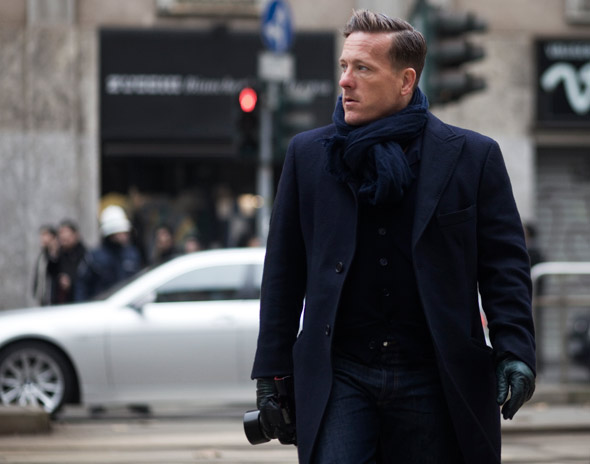 As the economy picked up through the mid-2000s and a new generation of hotshots started looking for ways to express both their financial success and – here’s that word again – individuality, many turned not to their pleated and oversized polo-clad parents, but to each other.
As the economy picked up through the mid-2000s and a new generation of hotshots started looking for ways to express both their financial success and – here’s that word again – individuality, many turned not to their pleated and oversized polo-clad parents, but to each other.
By now the Internet was very much a social influencer and instant research tool for pretty much everyone. Through revolutionary blogs like Scott Schuman’s Sartorialist, guys saw how to dress with genuine style and flair. Real people with real taste; not a runway or catalog or magazine but the streets of New York. Sites like the one you are now reading and Andy Gilcrest’s Ask Andy (the founding father of menswear blogs) provided the kind of detailed sartorial and style information simply not available before.
The Internet’s impact on the universe of men’s style cannot be emphasized enough. The rise of blogs, street photographers, and self-taught and self-described fashion experts has literally changed the world of fashion in general and of menswear in particular. Never before had such an enormous amount of information, or access to those with it, been available to anyone with an interest in dressing well.
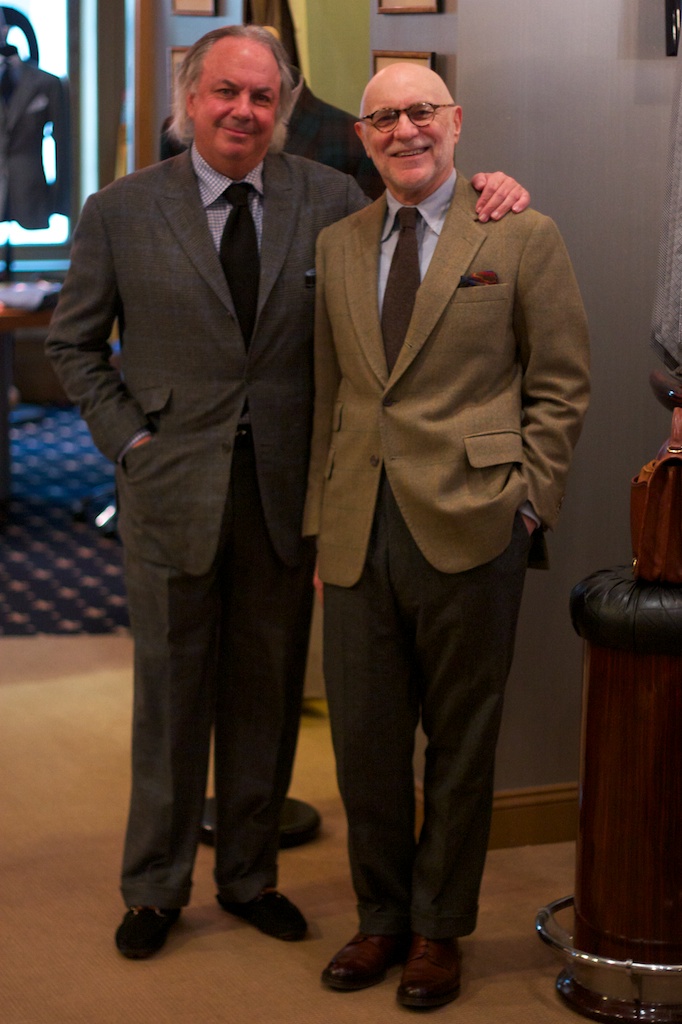 This up-and-coming generation of young men took it upon themselves to learn about the history of men’s style, its variations and traditions. Most importantly, they started to talk about it with each other. Bypassing their parent’s generation altogether, the inspiration we now see comes from the golden ages of menswear: the 1920s through 1950s.
This up-and-coming generation of young men took it upon themselves to learn about the history of men’s style, its variations and traditions. Most importantly, they started to talk about it with each other. Bypassing their parent’s generation altogether, the inspiration we now see comes from the golden ages of menswear: the 1920s through 1950s.
The success of TV’s Mad Men has also awakened a belated appreciation of 1960s streamlined, swanky, cocktail-swilling manliness. An entire subculture developed, fixated on analyzing the remarkable period execution of the show’s producers and set dressers. It made made young men want to dress up and dress well. While another lasting impact of the show is the rebirth of a long-needed cocktail culture, thankfully, we are now seeing a loosing up of the ridiculous too-tight, hyper-fitted suit trend.
With all this as a cultural backdrop, more blogs began popping up and more Sartorialist-inspired photographers began posting examples of outfits and clothing details. When OTC launched nearly 10 years ago, it was one of perhaps five menswear-focused blogs. Now there are scores, covering all aspects of men’s fashion. While a few take it seriously, many other just come and go based on trends.
Some, like the high-end watch blog Hodinkee, made the transition from part-time passion to full-time going concern. Others, such as A Continuous Lean, a side project of Paul+Williams‘ Michael Williams, provide a creative channel to highlight the founder’s branding and style expertise. ACL is also a founding force behind the highly influential Pop Up Flea.
The audiences for these sites continue to grow. And it’s not just Wall Street I-bankers looking for the right Rolex. Many of these men want a detailed understanding of proper suit construction, appreciate the differences between mechanical and automatic watch movements, and care deeply about the provenance of a Frank Clegg briefcase or the hallmarks of a handmade shoe. They see clothing, watches, pens, bags, and the things of life as investments and heirlooms.
When the crash of 2008 tore the confidence and pay checks from massive swaths of the population, an interesting thing happened in the world of menswear. As expected, a degree of formality and sobriety returned to many workplaces. Some companies chose to reestablish guidelines for work attire; tightly defining office casual or once again requiring traditional business dress.
The reaction among menswear and style bloggers was not to rise up against conformity but to double down in their own way. They demanded from each other and the fashion world more choices, greater quality, customization, and the rediscovery of dandyism. To some degree it was a case of grounding oneself in the classics during a time of uncertainty. And while sites like IVY STYLE revel in the joys of East Coast preppy culture (always popular in its own right), not all influencers had their gaze set to the rear view mirror.
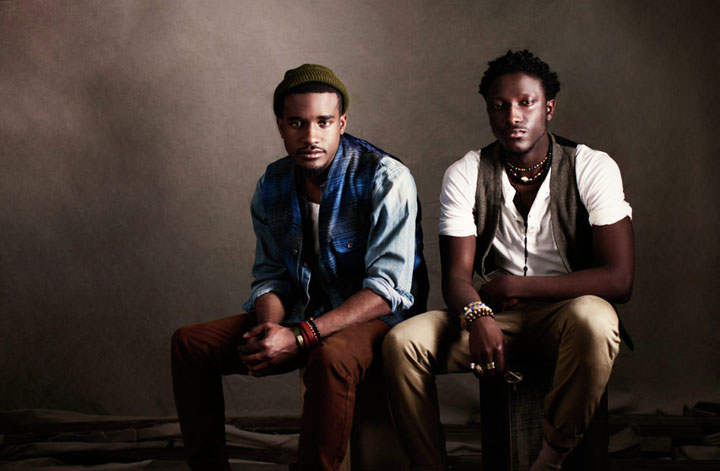 For some of these bloggers, taking classic style traditions and breathing into them new life is a goal in and of itself.
For some of these bloggers, taking classic style traditions and breathing into them new life is a goal in and of itself.
A few years ago, OTC organized a blogger meet-up for Alan Flusser, the noted menswear designer and author who created Gordon Gecko’s wardrobe for the movie Wall Street.
Normally accustomed to captains of industry and fashion royalty, his audience that night consisted of young menswear bloggers; a new generation looking to blend traditional style with modern sensibilities. It was eye opening. While Alan may not have know who many of there people were, they knew exactly who Alan Flusser was.
Street Etiquette is a leading example of this classic/urban hybrid which is powering much of the interest in menswear. Joshua Kissi and Travis Gumbs, who both attended the Flusser event, are seriously influential guys with creative, detail-oriented points of view. One of their best known projects is Black Ivy, a thoroughly stylish update homage to the iconic Ivy League reference book Take Ivy. Street Etiquette is now a globally recognized lifestyle brand – as it should be.
Alan too is adapting to this new generation’s sensibilities. Recently revamping his showroom to reflect a cleaner, Art Deco feel and tweaking his house silhouette a bit, he understands that the influencers of today are less likely to be him, and more his kids’ peers.
Nonetheless, he and other fashion luminaries like G. Bruce Boyer or Richard Press are not sitting still, reflecting in their past glories. In many cases, they are inspiring and working with this new generation of dedicated taste makers and style educators. They are imparting their own knowledge while taking in what’s new and fresh.
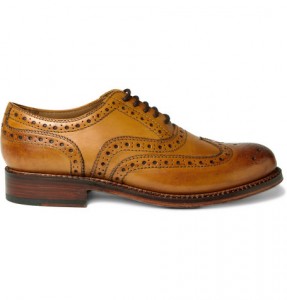 Just take a tour of the websites and blogs dedicated to men’s fashion and style and you will find a master’s degree worth of examples in branding, content management, writing, photography, and retailing.
Just take a tour of the websites and blogs dedicated to men’s fashion and style and you will find a master’s degree worth of examples in branding, content management, writing, photography, and retailing.
We have lost track of the number of former bankers who have reached out to OTC to tell us about their custom suit, shirt, or tie making venture. For some, it’s all business and they see a market in dressing well. For others, frankly a surprising number of them, it’s a real desire to express a deep interest in helping people be their best.
Big names like MR PORTER, the men’s division of NET-A-PORTER, combine retail flash sales with blog-worthy content. Akin to a newspaper with its features and product write-ups, it’s clear that the site’s backers understand the single most important thing about getting a guy’s interest in fashion piqued: content.
For men, content is king and context is a close runner up. Combining the two, Instagram is the perfect social media vehicle for many menswear influencers. The balance between artistic flair and viral shareability is very much the new avenue for expanding one’s sense of style, love of heritage and brands, and, of course, influence.
And that is one of the great levelers brought by the internet to this discussion. It democratized the issue of fashion and the relevance of style. The blogs and sites which have succeeded and continue to wield influence represent usefulness and relevance, regardless of what a given fashion house says. They give their readers something worth reading, content with value, and the historical and style-focused context to help put it all into perspective.
Hopefully, this article from OTC (one of the best darn, influential menwear blogs out there) provides just that.
An interesting piece. Thank you.
Best Regards,
Heinz-Ulrich von B.
Thanks very much for the kind words.
Great article, this is really important. Part of being a modern man is knowing what works on your figure and what doesn’t. As someone who struggled with their weight as a teenager (which many guys, thankfully, don’t have to experience) it’s been a trial to find my sartorial voice and define my own style without getting sucked into some of the popular trends that don’t suit my body shape. Also: investing in higher-quality pieces. But that’s a learned behaviour!